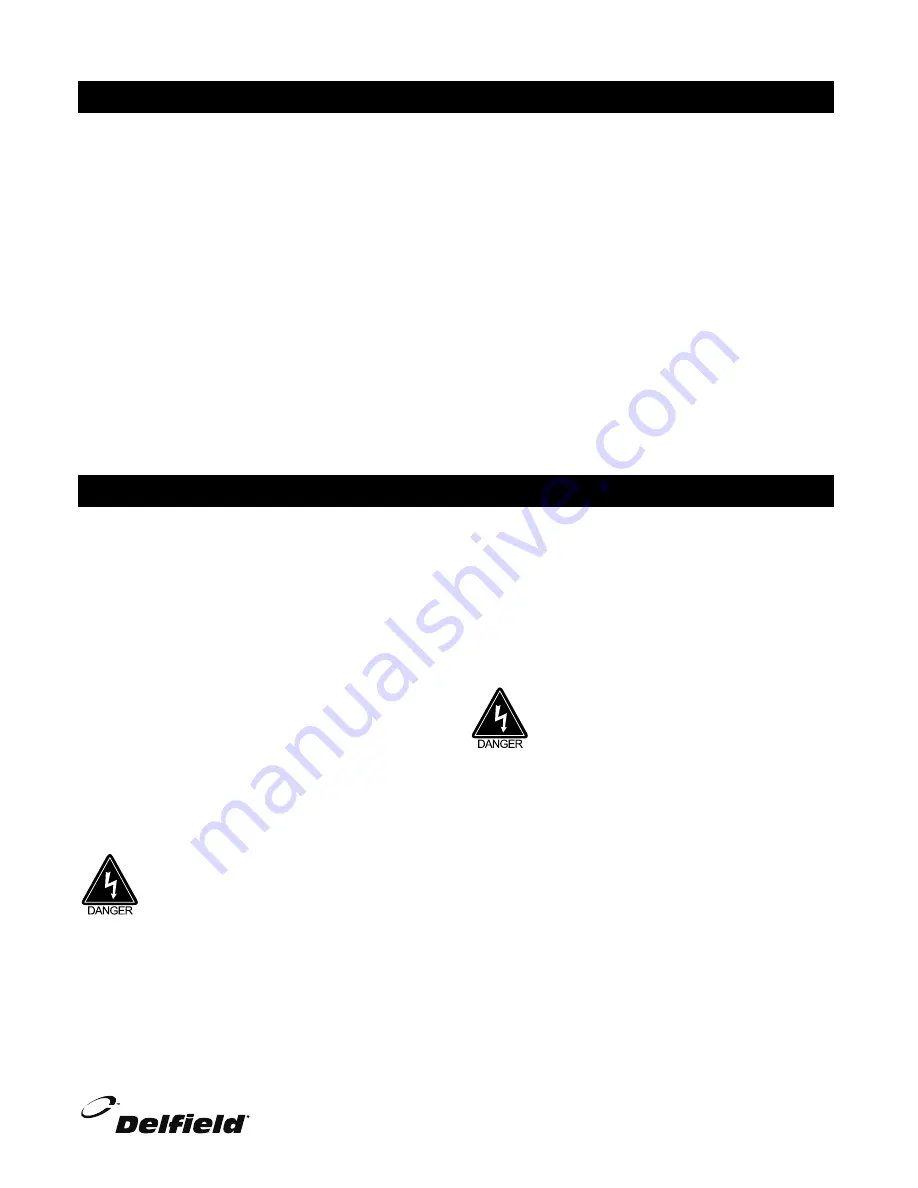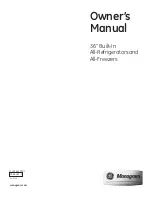
F13 Series Ice Cream Cabinets Service and Installation Manual
3
For customer service, call (800) 733-8829, (800) 773-8821, (989) 773-7981, Fax (989) 773-3210, www.delfield.com
RECEIVING AND INSPECTING THE EQUIPMENT
INSTALLATION
Location
These units are for indoor use only. Be sure the
location chosen has a floor strong enough to support
the total weight of the cabinet and contents. Reinforce
the floor if necessary to provide for maximum loading.
For the most efficient refrigeration, be sure to provide
good air circulation inside and out.
Outside cabinet
: Be sure that the unit has access to
ample air. It is suggested that the rear of the unit be
no less than two inches from any wall, partition or any
other object which will restrict exhaust air flow. Avoid
hot corners and locations near stoves and ovens.
Leveling
A level cabinet looks better and will perform better
because the cabinet will not be subject to undue strain.
Electrical connection
Refer to the amperage data on the serial
tag and your local code or the National
Electrical Code to be sure the unit is
connected to the proper power source.
A protected circuit of the correct voltage
and amperage must be run for connection
of the line cord or permanent connection
to the unit.
Self-contained models are provided with an a
ON/OFF
power switch located directly behind the louvered panel
of the compressor section. Also located behind the
louver panel in the compressor section is the On/Off
switch for the heater wires. On the remote units the
thermostat may be provided with an
OFF
position which
shuts off only the solenoid valve.
The power switch must be turned to the
OFF position and power disconnected
whenever doing the following:
1) Performing maintenance functions.
2) Cleaning the refrigerated cabinet area.
3) Performing service or repair functions.
Under no circumstances should the unit
be operated without the louvered panel in
place!
If receptacles are to be mounted in the unit backsplash,
the power must be supplied from a separate electrical
source and installed in accordance with the national
Electrical Code and local electrical codes.
Even though most equipment is shipped crated, care
should be taken during unloading so the equipment is
not damaged while being moved into the building.
1. Visually inspect the exterior of the package and
skid or container. Any damage should be noted
and reported to the delivering carrier immediately.
2. If damaged, open and inspect the contents with
the carrier.
3. In the event that the exterior is not damaged, yet
upon opening, there is concealed damage to the
equipment notify the carrier. Notification should
be made verbally as well as in written form.
4. Request an inspection by the shipping company
of the damaged equipment. This should be done
within 10 days from receipt of the equipment.
5. Check the lower portion of the unit to be sure legs
or casters are not bent.
6. Also open the machine compartment housing and
visually inspect the refrigeration package. Be sure
lines are secure and base is still intact.
7. Freight carriers can supply the necessary damage
forms upon request.
8. Retain all crating material until an inspection has
been made or waived.
Uncrating the Equipment
First cut and remove the banding from around the
crate. Remove the front of the crate material, use
of some tools will be required. If the unit is on legs
remove the top of the crate as well and lift the unit off
the skid. If the unit is on casters it can be "rolled" off
the skid.






























